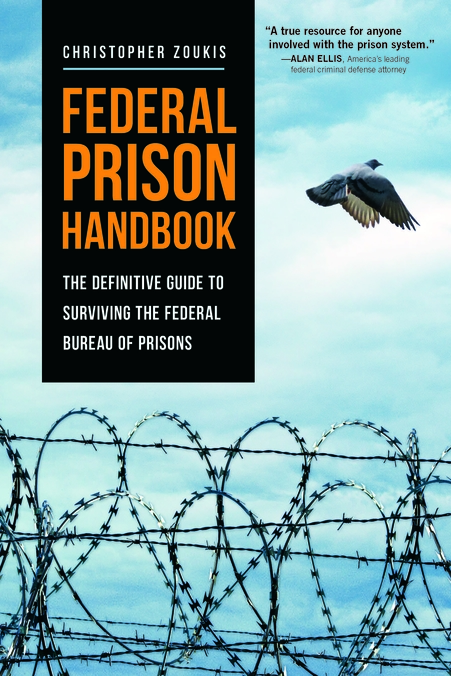Crime, the Myth
It’s up to society to say what is and isn’t a crime, and it varies more than one might think.
by Emile DeWeaver, Brennan Center
Crime is not real. This assertion flies in the face of common sense and consensus. Of course crime is real, one would be justified in thinking—we see “crime” every day on the news. Charles Manson was, in fact, responsible for nine murders. Dylann Roof did, in fact, enter the Emanuel African Methodist Episcopal Church and kill nine people. Crime rates are, in fact, either up or down or stable on a given day in every city in the United States.
So how could crime be a fiction? The reader and I likely agree that people hurt others and transgress moral boundaries. We may also agree that communities have the job of figuring out how to prevent and remedy such transgressions because a basic precondition for happiness is safety. If, however, we are actually to create a society that is safe for everyone, we’ll profit from challenging our belief in the “reality” of crime.
Begin this challenge by considering race. For hundreds of years, race’s realness was a “fact,” but today, scientists understand that race is not real. What “real” means is well described by journalist Jenée Desmond-Harris. “By ‘real,’ I mean based on facts that people can even begin to agree on. Permanent. Scientific. Objective. Logical. Consistent. Able to stand up to scrutiny.” Racism is real, as real asDylann Roof. Race, however, is a fiction, and the creation of this fiction was a political project aimed at a political end.
It is in this sense that crime is also fiction, and I’ll offer one more example before I come to my point. Consider the difference between a person and a person’s mythology—specifically, consider King Arthur of medieval England. Historians debate whether or not Arthur was a historical person whose accomplishments have been wildly exaggerated (his legend features sorcerers, an unbreakable sword that cuts through anything, and a lady who lives beneath a lake) or whether he is a pure fiction.
As a thought experiment, let’s say he was a historical figure around which a fictional legend arose. You would be justified in saying that King Arthur is real; his mythology is not. What if, however, this distinction isn’t available to you. Would it make sense to say King Arthur is real if we make no distinction between his historical person and a king who killed giants and dragons with a magic sword?
The national conversation about crime engages a similar mythology: prevailing narratives routinely deny us the ability to make the distinction between myth and reality. These narratives are, like racial narratives, political projects aimed at political ends. Given the conflation between myth and reality, it makes as much sense to call crime real as it does to call the legend of King Arthur real. If we want to call crime real, we have to locate the truth of what it is and what it isn’t. We have to dispel the mythologies of crime.
One myth is that we punish people for committing crimes. The truth is we punish people less because of what they do and more because of who they are. If I kill a stranger on the street for disobeying my orders, I’m a murderer. Police officers routinely kill unarmed people for, according to police claims, resisting arrest—arrests, as in the case of George Floyd, where no meaningful “crime” has been committed—but we don’t treat police forces like criminal institutions.
If I steal toilet paper from a convenience store, I’m a thief who deserves incarceration, but when Donald Trump and his “university” steal $25 million from students, he’s merely someone who has to return the money he stole. On January 6, Trump incited an insurgency in nation’s capital that resulted in multiple deaths. If Patrisse Cullors, the cofounder of Black Lives Matter, incited an insurgency in the Capitol, she’d likely be shot to death on the street without a trial.
In these comparisons, there’s no moral difference that justifies criminalizing me or Cullors but not police officers or Trump. Yet popular narratives in the United States have manufactured a moral difference. Such fabricated differences often rest on narratives about how the actions of a “criminal” harm people or society. But when we compare the scale of harm done to society by Trump or Officer Derek Chauvin to the harm done by, say, a 16-year-old drug dealer, crime (or the absence of it) is no longer a function of the harm a person causes—it’s a function of privilege, which necessarily implicates the perpetuation of white supremacy. In other words, the truth beneath the mythology of crime is that many Americans feel justified in punishing people not because of what the people have done but because of their social position relative to the white power structure.
Then there’s a second myth, that crime is an act committed by an individual. Calling an act a crime is instead a choice we make as a society about how we respond to harms committed in our community. I recently experienced how this myth operates while standing in line at a local Walgreens.
I was about to check out at the cash register when I looked up from my phone and noticed a security guard becoming excited, even agitated. He alternated between whispering to a store clerk and positioning himself to track someone in the surveillance mirrors on the store’s ceiling.
The scene awakened trauma in my body. I remembered all the times I’d been caught shoplifting as a child, how quickly and easily our criminal legal system could destroy a young life, family, and community in the name of justice. I began to scan the security mirrors too, thinking please don’t let this be some kid. The security guard ducked into an aisle. I tracked him in the mirrors to determine his target. The person stealing wasn’t a kid.
I sighed with only slight relief because the person’s age was of little consolation. From the state of his hoodie, it seemed likely that he was a homeless person. We’re in the middle of a pandemic, I thought, and he’s struggling to survive. The security guard intercepted him. By then, more and more people—both staff and customers—had realized what was happening. The store grew tense, fearful.
I watched the guard escort the man along the back of the store. When I was 18, I was a security guard; I knew the next step for the guard was to call the police. I was about to pay for the coffee I had bought, so I asked the clerk to ring up the sale and told her I’d be right back. The security guard moved toward the store exit with his charge. I stopped them and addressed the homeless man.
“Hey, man,” I tried to sound as casually authoritative as I could. “Go back, get whatever you want, and I’ll pay for it.”
Something quite phenomenal happened.
The store’s tense, fearful atmosphere evaporated. A look of deep relief washed over the security guard, and he stepped back without protest. The people standing in line relaxed. A woman working in the photo department left her post to open a third checkout stand specifically to get this homeless man checked out. She smiled and treated him like a human being. It’s true that I had to buy this treatment for him ($30 for toilet paper, food, and a razor), but that did not make the decisions everyone made in that store any less real or less important. All it would have taken is for one person to insist on police involvement, and that homeless man would have been arrested. It took the entire community waiting in that store to save this man.
The homeless man had in one second gone from a criminal whom people feared and even reviled to a member of a community who needed support. Not only did this community—the people in the store—choose to support him, they seemed hungry to do it. They’d just needed to be shown a path and given the opportunity to be the community that the man deserved. The difference between crime and not-crime wasn’t the homeless man’s actions or his intent. It was his community’s response.
Emile DeWeaver is the senior strategist of advocacy at Prison Policy Initiative. This essay, originally published May 3 at brennancenter.org is part of the Brennan Center’s series examining the punitive excess that has come to define America’s criminal legal system.
As a digital subscriber to Criminal Legal News, you can access full text and downloads for this and other premium content.
Already a subscriber? Login





